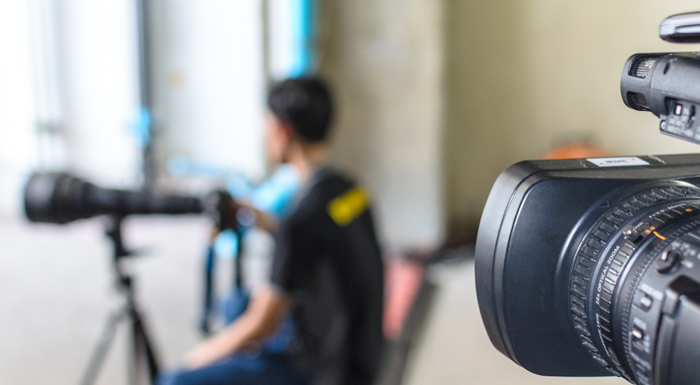16 Stats That Prove the Value of B2B Video

Share this story
Modern B2B marketers understand the value of video in their buyers’ journeys. They recognize the power of video content to engage and convert today’s B2B buyers, and they want to claim those results for their companies. However, when budgets get tight, video can be one of many marketing tactics under increased scrutiny.
To help keep video off the chopping block, check out these 16 statistics that will make a clear case for getting your company’s products, employees and customers in front of the camera.
Who’s Consuming Video?
- 93% of B2B buyers say video is important in building trust in a brand. (Brightcove)
- 19% of B2B marketers now use the short-form video platform TikTok — more than double from last year. (Content Marketing Institute)
- 88% of B2B buyers have watched videos to learn about a company’s products or services in the last three months. (Brightcove)
- 96% of people have watched an explainer video to learn more about a product or service. (Wyzowl)
- 91% of people say they want to see more online videos from brands in 2023. (Wyzowl)
- Product reviews (39%) and product demos (39%) are the most cited types of videos B2B buyers say they’ve watched in the last three months. (Brightcove)
- 91% of B2B tech buyers, 75% of B2B manufacturing buyers and 68% of B2B financial services buyers prefer video content over written content when learning about a complex product / service. (Brightcove)
Who’s Creating Video?
- Video is the second-most popular content format B2B marketers create, with 84% of B2B content marketers using it. Video trails only articles / posts (94%). (Content Marketing Institute)
- 69% of B2B marketers said they think their organization will increase investment in video in 2024. (Content Marketing Institute)
- Across industries, financial services companies created the most videos in 2022, with an average of 934 videos per company — an 83% increase over the previous year. (Vidyard)
- In 2022, companies with 5,000+ employees created 55% more videos than the last year. (Vidyard)
Getting Results from Video Marketing
- Marketers who use video grow revenue 49% faster than those who don’t. (Brightcove)
- 97% of B2B buyers say they would be more receptive to sales communications from a business after viewing their video content. (Brightcove)
- 53% of B2B marketers said video and case studies / customer stories deliver some of the best results. (Content Marketing Institute)
- 70% of B2B buyers say video beats other content formats in creating awareness of business-related problems. (Brightcove)
- Marketers say product videos (36%) deliver the most ROI, followed closely by educational videos (33.6%). (Wistia)
If you want to drive marketing results like these, contact us to learn more about our B2B video services.


